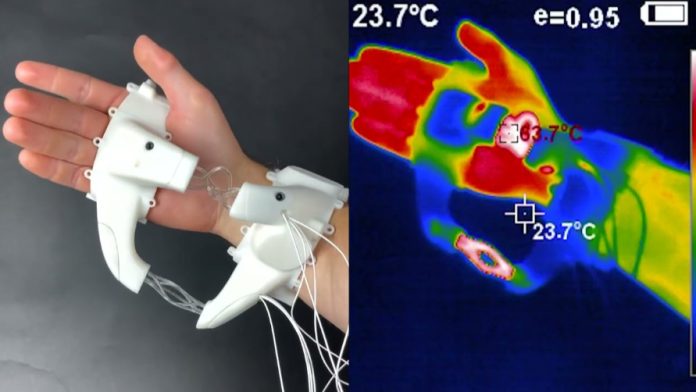
Imagine a wrist brace that allows you to move your wrist when you need it and locks it safely in place when you don’t.
Or picture a robot that changes the way its joints move depending on the task—stiff and steady for gripping objects, but flexible and fluid for swimming.
This kind of adaptability may soon be possible, thanks to new research from Carnegie Mellon University’s College of Engineering.
The team of researchers has developed an algorithm that enables the design of shape-shifting joints with six degrees of freedom.
This means the joints can move in multiple directions and adjust their stiffness based on the needs of the moment.
This breakthrough allows designers to create wearable devices and robotic parts that can easily reconfigure their movements, making them more useful in everyday tasks.
One of the team’s examples is a wrist brace for people with carpal tunnel syndrome. Traditional wrist braces are rigid and restrict all movement to prevent further injury.
While this is helpful for healing, it can also be inconvenient for daily activities.
The new design allows the brace to stay stiff most of the time but unlocks specific motions temporarily so that users can perform tasks like picking up a cup or opening a door.
This kind of smart adaptation lets patients move freely when needed without constantly removing the brace.
The secret behind this technology lies in something called “metastructures.” These are specially designed 3D-printed materials that can change their shape and stiffness when exposed to heat.
During the experiment, the researchers used resistive heating wires to make the structures shift their movements. This technology could eventually allow entire devices to be printed as one solid piece, reducing costs and improving functionality.
The possibilities for this technology extend far beyond medical wearables. The researchers believe that shape-shifting joints could be incredibly valuable for robots as well. Today, most robotic joints are designed for one specific purpose.
For example, a robot built to pick up heavy objects has stiff, powerful joints, while a robot designed for delicate tasks needs softer, more flexible joints. The new design allows one robot to switch between these types of movements, making it much more versatile.
Imagine a home-assistant robot that helps with chores. It could have strong, steady movements for carrying groceries but switch to soft, flexible motions when handling fragile items.
The researchers even suggest that underwater robots could use these shape-shifting joints to swim gracefully like an octopus, extending their capabilities to entirely new environments.
The technology could also improve augmented reality experiences by mimicking the feel of different materials. A user could touch a surface and feel it shift from the softness of a gel to the hardness of metal, enhancing virtual simulations and medical training.
The team is optimistic about the future. They hope to move from prototypes to fully 3D-printed devices soon, which would make these advanced wearables and robotic joints affordable and widely available.
They also plan to explore softer, more flexible materials to make the devices even more comfortable to wear.
According to Dinesh K. Patel, one of the research scientists, this is just the beginning. Their algorithm is not limited to any specific material, opening up the door for a wide range of applications in the future.
With these advancements, we may soon see robots and medical devices that can adapt to our needs, just as easily as we bend our wrists or turn our heads.



